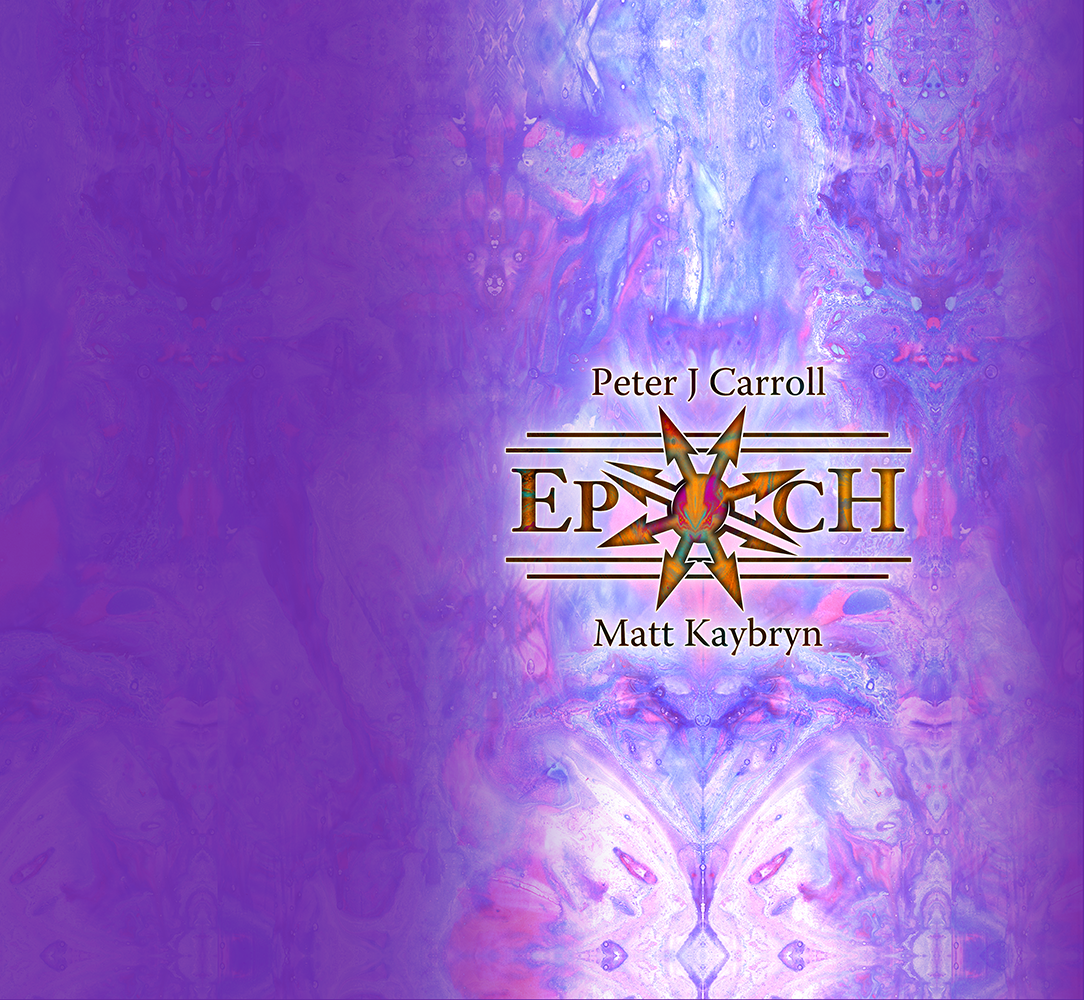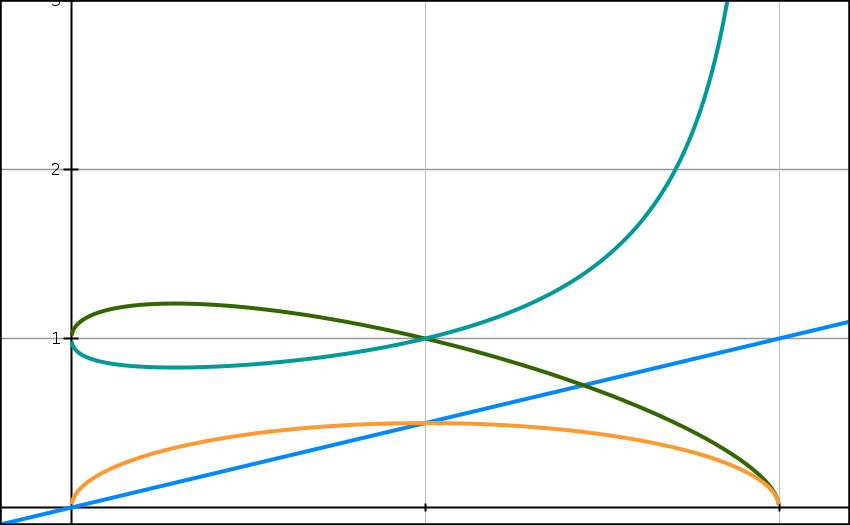Blog
- Details
- Hits: 14336

Flat Universe?
Ah, the Scottish Highlands in spring, what a delight to see the still snow-capped Cairngorms, the sun kissed daffodils around the low roads, and my second granddaughter for the first time. What a surprise also to see The Flat Earth shop in Inverness and all the flat earth graffiti on the surrounding road signs; some people up there seem to take this as seriously as the Loch Ness Monster, and Dour Protestant sects by the bucket load.
Whilst I admire eccentricity and non-conformity, Flat-Earthism does seem rather vulnerable to immediate falsification. You may laugh but remember that almost the entire scientific community still subscribes to Flat Universe theory – the idea that exact Euclidian geometry applies to the whole universe thus giving it an overall zero curvature, a big bang beginning and a catastrophic ending.
You might think that the pervasive superstition of an explosively expanding universe suggests a negative curvature but by miraculous coincidence all the supposed mass within it supplies a positive curvature (gravity) just capable of arresting the supposed expansion given infinite time.
In centuries to come our descendants will laugh at Flat-Universism as heartily as we now laugh at Flat-Earthism. The cracks of its impending falsification have already appeared where you would most expect them – in the ‘crank’ scientific papers written by people such as myself.
The hypothesis of Hypersphere Cosmology for example: -
http://www.specularium.org/hypersphere-cosmology
shows that the universe has an observable positive curvature which we can see in the residual Pioneer deceleration, the retardation of the frequency of light when it traverses cosmic distances, and the diminution of type 1A supernovae luminosity due to cosmic hyperspherical lensing. Moreover, the hypothesis also explains the anomalous galactic rotation curves without dark matter and provides the only scenario in which Mach’s Principle of the origin of inertial mass can apply.
http://vixra.org/abs/1710.0066
All these parts of the hypothesis come with rigorous supporting mathematics.
Does any of this matter to us tiny humans on this quaint little planet in the suburbs of one unexceptional galaxy among billions?
Well it matters intensely to me because our views of the universe underlie our metaphysics and philosophies and religions and theories of magic, and thus what we believe about reality and thus how we live.
The big bang hypothesis with its big crunch or entropic fade-out ending seems a horrible sort of monotheistic style apocalyptic scenario from which humanity can never escape except to the imaginary transcendental realms of some great sky-fairy or other. This doesn’t encourage people to value this life or to look after this planet.
On the other hand, the Hypersphere Universe has no beginning and no ending, it has finite but unbounded extent in space and time – meaning that you can never fall off the ‘edge(s)’ of it in any dimension. Humanity could survive for effectively unlimited time if it proves clever enough to move to fresh habitats as stellar and galactic events render old ones unusable. Plus, the universe having effectively unlimited age will most certainly contain intelligences far older than our own that may eventually decide that we have become worth communicating with.
Meanwhile the extended Apophenia working on Arcanorium College continues to produce a splendid burst of inspiration and creativity in many fields.
For me it has led to the evolution of the structure of Square Rigger Chess as a sort of distraction activity (soon to appear on the games pages) whilst making some progress with the Quantum Hypersphere hypothesis. It has become clear that the phenomena of individual quanta depend on the phenomenon of the entire universe; as Hermes Trismegistus quipped – As Above, So Below.
Imagine a perfectly spherical planet with no land, just an entire surface of water. Drop a rock into it and circular waves spread out, eventually these waves will converge on the other side of the planet and get higher as the circles get smaller, finally producing a spike in the water as the inverse of the hole in the water that the rock made.
Three dimensional spherical waves in a hypersphere will do something analogous in a hypersphere. An antiparticle will appear at the antipode.
That an antiparticle appears at the antipode may seem a little odd. However, consider this – if you travel to the other side of this planet you end up upside-down with respect to your starting orientation, you have rotated 180 degrees. If instead of simply moving across a slightly curved plane to a terrestrial antipode, a particle moved right across/around the curved hyperspherical universe it would become rotated through all dimensions of space and time to become its mirror image antiparticle.
This all seems to fit in with Milo Woolf's ideas on particles as spherical standing waves, the transactional interpretation of quantum mechanics, and the hypersphere cosmology idea of antipodal particles having opposite matter/antimatter sign.
De Broglie hypothesised that matter quanta have the wave/particle duality that energy quanta exhibit, and indeed we can now demonstrate quantum entanglement, superposition, and tunnelling with matter quanta such as electrons. As the transactional interpretation of quantum mechanics seems the only one capable of providing a physical-principle model for these phenomena then presumably the phenomenon of moving matter particles must also arise as a transaction process in which advanced waves move backwards in time.
Thus, the wave function of any quantum stretches all the way around the universe to its antipode point at about 14 billion light years away.
So, a photon, an electron, a proton, a ball bearing, this planet, you and I, all consist of interreference patterns that manifest as particles out of wave functions that extend right around the entire universe.
Om.
- Details
- Hits: 14272

Springblog
I feel thrilled to announce the spring arrival of a second Granddaughter. Mother, baby, and husband all doing great, they put this down to the hypno-birthing techniques they used, plus I guess an oat-fed hardy Highland lifestyle helps.
Life up there certainly has some big upsides, you can wander around the miniature city of Inverness without having to watch your back, and random people will strike up pleasant conversations with you and none of them seem mad or demand anything of you. Plus, you can actually observe people walking around or sitting down without the aid of mobile phones.
In a further celebration of spring all three ponds have started to fill with amphibia, frogs and toads in the mature ones and just frogs so far in the new one. Just in time for the spring equinox I finished and hung Sol Invictus on a south facing wall and readied the Moon for a propitious hanging date. These consist of ‘turdcrete’ (sheepswool and bracken compost with Portland cement) over steel wire frames, acrylic finish.
Have you noticed the appalling deterioration of political and social debate in the years since the development of the internet and social media? Debate seems to have descended into the hurling of insults, recycled soundbites and abstract memes. The words ‘fascist’ or 'phobic' seem to have become items of punctuation, and applied liberally to anyone the speaker fears to even enter debate with and would therefore rather no-platform to preserve the safe space inside their head which has become so fragile due to the abandonment of critical thinking. It seems that in this age of mass-alienation and too much information, so many people seek the identity and solace of niche-herd-minds and preformed opinions.
Perhaps that constitutes the secular substitute for religion these days. We used to value the principle of trying to see the others’ point of view, at least in secular matters, but if opinion and identity become a religion, that option goes.
Correspondents inform me that even the esoteric social media platforms have degenerated into factional invective these days.
As an antidote to all this Arcanorium College proudly announces that we will shortly conduct a Philosophy of Magic course, a leisurely debate over some months.
We shall conduct this as always, as men and women of letters.


- Details
- Hits: 14104
My IT guy has eliminated the cryptocurrency mining franchise which had apparently taken up residence on this site and also he has upgraded the template, so bear with me whilst I learn it anew.
Firstly, wow, what a device, see this link https;//ldrt.ch/tks127
And now, a random rambling cornucopia of bits upon reaching pensionable age: -
Old age doesn’t seem so bad when you consider the alternative, over the hill seems preferable to under it.
I gazed upon the star Aldebaran having discovered that due to its distance at 65 light years, the light I perceived (and hence became quantum entangled with) set off on my zeroth birthday. I hope that I have not inadvertently just invented yet another useless form of natal astrology.
Nevertheless, I do hope against all sense and reason to survive to see my Uranus return (84 years), much remains to do, sorting the cosmology problem took 20 years, quantum hyperspheres remain a daunting quest. We still lack a tight theory of the magical link.
A festive interlude in the Scottish Highlands visiting the expanding clan proved a delight. A six-mile hike to the top of Plodda falls through icy and beautiful terrain culminated in a magnificent view and a splendid experience of vertigo, and afterwards so as not to show weakness in front of the Scots we did a sub-zero outdoor barbeque.
Fort George on the Moray Firth provides examples of one of the largest Georgian artillery fortress in the world and the bizarre bonkers-ness of regimental life. It even has a cemetery for regimental mascots and officers dogs. Highland battledress seems designed to convince any enemy of the dangerous madness of the wearer. The fortress seemed awesomely overbuilt just to supress any unlikely further Jacobite uprisings after Culloden, perhaps it also serves to interdict the passage of monsters to the Ness. Thirteen-inch bore mortars seem a bit excessive for use against tartan-clad swordsmen; I think they actually threw depth charges.
A post festive trip to Barcelona brightened up the end of January; we did the inevitable tourist sights. The Modernista Sagrada Familia cathedral looks brilliant from a distance or as a monochrome scale model. Close up however it looks laughably kitsch and tacky. Catholic cathedrals usually have a dignified exterior and reserve all their gaudy sentimental and macabre religious tat for the inside. Unfortunately, here they have put it all over the outside as well, making it look like a castle in a religious Disneyland. Because they have used modern materials it probably will not last a century judging by the deterioration of the Park Gueli structures by the same architect.
The early Picassos impress with their superb draughtsmanship and eclecticism of styles. The late ones suggest a profound diminution of eyesight and mind.
A side pilgrimage to the Salvador Dali theatre/museum/shrine at Figueres proved the high point of the holiday, a day in the dreamscapes of the high priest of Pareidolia; hallucination and imagination and the subconscious running in splendid magnificent riot.
Do I worry about the POTUS? Not much. Politics has always consisted of a shitstorm of spin, misinformation, propaganda, and fake news. Technology has merely accelerated this and made it more obvious. Trump hasn’t actually done anything too terrible yet despite playing a mixture of madman strategy and dumbman strategy that has thoroughly confused his adversaries. We only used to find out about the downsides and clay feet of our glorious leaders long afterwards, now we get it in realtime. At least North Korea and South Korea seem to have made friends at last, loudmouth madman strategy can work you know.
Whilst away I read a copy of Dan Brown’s ‘Origin’, I got for xmas. This lively story revolves around the discovery of a bit of science that could overturn most of the world’s major religions.
I won’t spoil it for you except to say look out for the bits on Chaos and the Chaos symbol itself in the text.
The discovery didn’t turn out as I’d expected from the cosmological hints in the story, nevertheless it certainly would throw a spanner in the works of most creation myths if it pans out.
This led me to muse upon a discovery that would undermine ALL creation stories and myths, including the scientific creation myth, and I realised that we may have it already: -
WHAT IF THE UNIVERSE HAS NO ORIGIN?
That probably sounds crazy within almost everyone’s current thought processes, we remain accustomed to phenomena having a beginning and an ending, although they merely change from one state to another, but if we rephrase it as -
WHAT IF REALITY HAS NO ORIGIN?
Then it perhaps becomes easier to contemplate
It lies here -
http://www.specularium.org/hypersphere-cosmology
Awaiting confirmation or falsification.
And in other news, asked to explain my aparently incomprehensible political position I came up with this:-
Entropolitics.
Inequality has come in for fashionable criticism recently, but do we really have too much of it or do we not have enough of it?
On one hand many of us spend much of our lives life trying to gain financial, social, and intellectual advantages over our fellow humans and to pass such advantages primarily to our offspring, and secondarily to our tribes of family, friends, and nation. We applaud ambition.
On the other hand, we tend to demand reciprocity from those who achieve wealth and power, and we find satisfaction in forcibly redistributing it through taxes and revolutions.
Yet wealth and power seem like heat in thermodynamics, they only do useful work when unevenly distributed.
Life itself, and lively societies, require entropy gradients.
Temporarily dominant individuals, polities and empires have created or sponsored most of our culture, science, art, religion and magic.
Ancient Egypt, Classical Greece, The Roman & Chinese Empires, The Islamic Empire, Renaissance and post renaissance Europe, The British Empire, The post WW2 American Empire, and now perhaps the New Chinese Empire. (Non – exhaustive list, I just picked some of the big players). A lot of people had, and will have, fun, liberation and enlightenment in building up and in attacking these structures.
Useful work occurs as wealth and power accumulate and then dissipate, as social friction, upheavals, revolution, and war occur.
Inequalities of wealth and power, empires and patronage, and the initiatives to tear such things down, have led to all the advances of our species.
As a Chaoist I do not have to have a set of opinions that conforms to other people’s standards of consistency.
Have you noticed how boring and dull equality gets? Strife seems so much more stimulating.
I reject the EU on the basis that it seeks to create economic and moral uniformity from the Baltic to the Mediterranean and from the Atlantic to the Urals.
Have you heard much interesting news from Denmark, Sweden, Norway or New Zealand recently?
Do you think that redistributive social welfare policies lead to the unnatural survival of feckless fools and apparent failures, and a resulting drop in collective fitness, or a useful broadening of genetic diversity?
Do you think that all cultures, societies, religions, and moral philosophies have equal value?
Alternatively, do you think some cultures, societies, religions, and moral philosophies have outlived their initial usefulness and gone bad and now need destroying?
Yes, I feel simultaneously conservative and radical. Inequality seems worth both striving for and against, depending on context and personal circumstance.
A healthy polity encourages both the accumulation and the dissipation of wealth and power.
Chaos, Discord, Confusion, Bureaucracy, Decadence.
The Zeitgeist revolves, hopefully in an upward spiral. Western civilisation currently seems currently on the cusp between Decadence and a New Chaos.
In the developed world we have sorted out the Discord and Confusion with many revolutions and a massive dose of Bureaucracy only to find that Decadence doesn’t seem all that satisfactory either.
Hail Eris!
Plus Also ::: I may yet collaborate on another book which we shall definitely NOT call '50 Shades of Gnosis'.
This will deal with a huge variety of methods of achieving altered states of mind, belief, and magic. (None of them involving chemognosis because that never lived up to the hype and I never met a wizard who made a success of it.)
- Details
- Hits: 15099

Advertisement. THE EPOCH
For the Sorcerer in your life only one gift can possibly suffice this festive season of Winter Solstice, Christmas, Mithrasmas, Saturnalia, or whatever you celebrate.
The Esotericon and Portals of Chaos, or the EPOCH as those in the know call it.
This book may well cast a strange and unusual perspective on most conventional views of magic, science, and religion.
It comes as a magnificent outsize 216-page hardcover Triple Grimoire with over 60 full colour illustrations accompanied by a deck of 54 large cards suitable for Divination or for use as Altar Icons in Enchantment, Evocation, Invocation, and Illumination.
The three Grimoires inside resume Elemental, Planetary, and Stellar Magic.
The Elemental and Planetary Grimoires present traditional forms of magic updated in the light of the innovative chaos magic metaphysics developed in the last several decades that now form the cutting edge of 21st century magical thought.
However, the Stellar Magic Grimoire provides something else entirely – the first coherent incarnation of The Necronomicon that a sorcerer can use effectively to access the knowledge and power of the Elder Gods.
So, no need for any further desperate searching in ancient libraries or in the dread tales recounted by the half mad, at last we have a functioning Necronomicon.
This awesome book could easily keep a magician busy for many years; it contains a great deal to explore and to work with. It represents the final Magnum Opus of a Grandmaster of the magical arts and sciences, assisted by staff and members of his esoteric Arcanorium College.
In 1978, the author as a young magician published the paradigm shattering Liber Null (Book Zero) which revolutionised magical theory and practise. Copies of the first edition of that book now sell for several hundred pounds each, and subsequent commercial editions in many languages have sold about 100,000 copies.
Only one edition of The Epoch exists. The author, who does not rely on writing for his fortune, decided to self-publish at cost for posterity, a single sumptuous edition that restructures the mould of magic in the light of a lifetime’s discovery.
He intends to spend the rest of his current incarnation delving more deeply into the religious, biological, psychological, cosmological and quantum insights and equations that the Necronomicon entities have begun to provide.
A limited number of copies remain; the author would like to see them in use.
http://www.specularium.org/peter-j-carroll/the-epoch
Thought Provocation & Entertainment. Cyber Eugenics.
A number of commentators have expressed concern at the tendency of people to end up in information echo chambers by using only internet news and opinion making media that reflect back to them their own proclivities and preconceptions, thus simply amplifying and reinforcing them. The internet, which many hoped would function to bring people together, seems to have had the effect of driving them towards self-referential cliques.
However, the internet may have started to have an even more insidious effect: -
If humans exhibited the same genetic diversity as domestic dogs then we would have people ranging in height from one foot (30cm) high to thirty feet (9 metres) high.
Wolves, the genetic ancestors of domestic dogs, (and who can still interbreed with them), show much less genetic diversity because they remain under intense selection pressure. Only wild wolves that remain within a limited genetic envelope of size, colour and behaviour tend to survive, outliers tend not to survive to breed. The uniformity of individuals within a species gives a good indication of how much selection pressure that species faces. All emperor penguins look virtually identical; they face terrible survival challenges in Antarctica.
Struggling desperate politicians and businessmen all tend to look the same. Don’t trust anyone in a suit. The successful ones tend to dress as they please.
Domestic dogs on the other hand have become relieved of many selection pressures by us. We have bred them for characteristics that would have compromised their survival and reproduction in the wild. We have bred some for excessive fierceness, some for excessive docility and friendliness, some for excessive hairiness or even baldness, some for huge size, some for miniature size, and some for specialised abilities of more use to us than them. Most breeds would die out if we returned them to the wild.
Humans have done this to dogs just by selective breeding. We have selected dogs with slightly more of certain characteristics that we wanted and then just kept breeding them together until the offspring exhibited those characteristics to a great degree.
Selective breeding of dogs (and of various other domesticated animals such as sheep, pigs, and cows) has accomplished extraordinary things, far more than genetic engineers usually fantasise about when contemplating directly interfering with DNA.
We bred cows down from Aurochs, ferocious beasts that looked like bison on steroids.
What about selectively breeding humans, do we stand poised to do it, or have we already started?
British aristocrats famously bred for beauty rather than brains for several recent centuries and now so frequently have the good looks and the dim wits to prove it.
The internet seems poised to have a profound impact on human eugenics because an ever-increasing proportion of young people now use the internet as a matchmaking service.
Whereas previously people had to compromise with whoever they could find in their town or village as a reasonably suitable mate, today’s young can, and 60% frequently do, use a computer to match themselves with someone of near identical social status, attitudes, abilities and characteristics from within a wide geographical radius. The dating algorithms in particular tend to match like to like.
The increasing incidence of full-blown autism may well arise simply because marginally autistic people now have a far greater chance of hooking up with each other in a more mobile and connected world.
Human ingenuity has increasingly relieved humanity of most of its traditional selection pressures. In many parts of the world, war, disease and want now eliminate very few people from the gene pool and the stupid and the feckless survive easily and reproduce in most fully domesticated nations.
Of course, selective breeding always remains subject to a certain amount of ‘recession towards the mean’. Two geniuses will not necessarily birth a third, but will more probably birth someone with well above average intelligence. Yet any characteristic will, if selected for over several generations, become much more pronounced.
So, in the absence of selection pressures and in the presence of computer assisted mate selection can we look forward to the human species becoming as diversely specialised as the canine species?
Can we look forward to a self-sorting Genetic Caste and Class System in which cliques of specialised people breed only within their own groups? Alternatively, will humans still find a strange frisson in ‘unsuitable’ partners? Perhaps we should consider writing a bit of that into the dating algorithms that seem to have acquired such an astonishing power over our species.
People keep on at me to write a science fiction novel, unfortunately, I haven’t the time to elaborate a ‘what if’ into a fully characterised folk opera, but help yourself.
Alternative Science. Hyperspherical Lensing Revisited.
Having received a number of requests for clarification I present the following.
The Hypersphere Cosmology papers on this site overturn the popular misinterpretations of the astronomical data that suggest that the universe has expanded and now undergoes an accelerating expansion due to a mysterious dark energy. The observed redshifts of type 1A Quasars and their apparent magnitudes provide two different measurements of their distances from us, and a mismatch exists between these measurements.
This mismatch finds an alternative explanation in terms of the hypothesis of Hyperspherical Lensing.
In this, the small positive spacetime curvature of the hypersphere of the universe slightly magnifies objects at less than half the antipode distance from an observer and progressively diminishes objects further away than this.
(Cosmological Redshift continues to provide an accurate measure of distance.)
The yellow line on the graph shows the curvature of the universe from the observer at the origin, to the antipode at about 14 bn light yr. The blue line shows the observers theoretical straight sightline.
(d means the distance as a fraction of the antipode distance.)
The pale green lensing line Lh = 1/(1 + sqrt(d - d^2) - d), represents the difference between the theoretical sightline and the actual hyperspherical geodesic that light follows to the observer, expressed as the amount of the visual field of the observer that an object will appear spread out over. Only objects at the half antipode distance will appear at their correct size. Closer objects will appear compressed; further away objects will appear progressively more distended. Note that in theory the antipode point itself would appear spread out around the entire sphere of the limits of the observer’s observation.
The darker green lensing line Lh = 1 + sqrt(d - d^2) – d, represents the resulting distortions to apparent magnitude, with objects closer than 7bn light yr appearing slightly brighter than they should and objects beyond that distance becoming progressively dimmer.
Astrophysicists can make use of either form of the lensing equation, depending on context.

- Details
- Hits: 16591
Herewith some Apophenia Votive Figurines posing as garden sprites, the middle one in black milliput over wire served to make a two part plaster mould for the other two cast from molten tin, without excessive collateral damage to the kitchen. The solid tin versions weigh in at over half a pound each. Lead free solder provides a convenient source of 98% tin. The plaster mould did not survive beyond the second casting.
With Immanent Neo-Pagan Deities, portable physical representations always come in handy for evocation or invocation. These figurines will feature in a forthcoming Grove event and in the next project at Arcanorium College.
Apophenia 2 Course, Arcanorium College January 2018
An Invocation of the Goddess Apophenia, She of the peculiar connections between various phenomena/perceptions/concepts/ideas and other phenomena/perceptions/concepts/ideas that ordinary mortals do not commonly perceive. This in support of assorted personal projects/quests/questions, and the execution and/or resolution thereof.
Caveat Emptor: -This may lead to inspiration, genius insight, mistake, or plain craziness.
Metaphysics exists as metaphor for the physical.
(Welcome to Chaos Magic – Post-Neoplatonic Esotericism in the raw.)
Metaphor provides the mechanism by which the mind relates to, and controls, physical reality.
We shall experiment with classical esoteric symbolism, Ars Combinatoria, Zairja, Cut Ups, Chaotic Torsion Pendulums, experimental investments of belief, non-chemognostic methods of hallucination induction, various mechanical, psychological and magical techniques for superposing ideas and concepts and mystical intuitions.
Participants will have to make and do a lot of stuff; and may anticipate finishing the course in a somewhat different state of brain to that in which they entered it.
